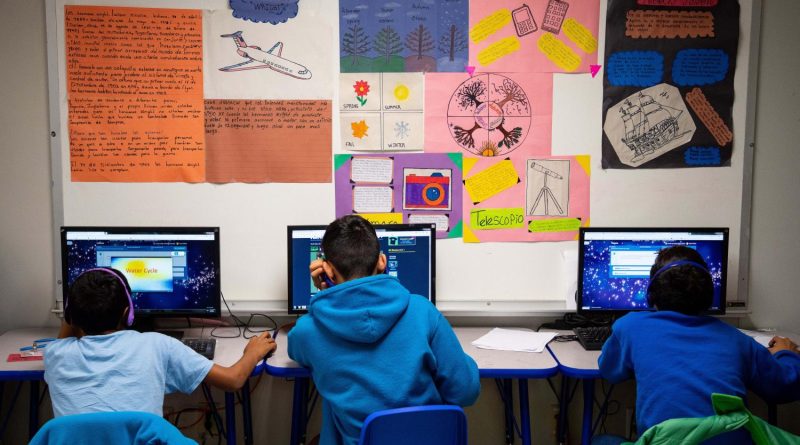Internet Literacy Programs: Bridging the Digital Divide in Rural Communities
The internet isn’t a luxury anymore. It’s the town square, the library, the job center, and the doctor’s office all rolled into one. But for millions in rural areas, that door remains locked. The key? Honestly, it’s not just about laying cable or boosting signals. It’s about people. It’s about internet literacy programs for digital skill development in rural areas.
Let’s be real. Throwing a smartphone at someone who’s never sent an email is like handing car keys to someone who’s never seen a steering wheel. The potential is there, but the know-how? Not so much. That’s the gap these programs aim to fill. They’re the driving lessons for the information superhighway.
Why Rural Digital Literacy Isn’t Just a “Nice-to-Have”
You know, the challenges out here are unique. It’s not just a matter of being hesitant to adopt new tech. It’s a complex web of limited access, affordability concerns, and a very real sense of relevance. “Why do I need this?” is a perfectly fair question when your life has functioned without it for decades.
But the cost of doing nothing is skyrocketing. We’re talking about:
- The Telehealth Gap: Imagine driving two hours for a 15-minute follow-up appointment that could have been a video call. Digital literacy unlocks virtual healthcare, a lifeline for aging populations.
- Economic Stagnation: From an artisan selling crafts on Etsy to a farmer using soil sensors, digital skills are the new currency for rural economic development.
- Educational Disparities: Kids in digitally literate homes have a fighting chance with their homework. Adults can access online courses and vocational training. The library’s knowledge is now in their living room.
The Blueprint: What Makes a Rural Digital Literacy Program Actually Work?
So, what separates a program that gathers dust from one that genuinely transforms a community? It’s not just about the curriculum. It’s about the approach.
Meet People Where They Are—Literally and Figuratively
Successful programs don’t expect people to come to them. They set up in community centers, local libraries, and even churches. The instructors aren’t tech gurus from the city; they’re often trusted local volunteers who speak the language, both literally and culturally. They understand that “the cloud” might sound fanciful and that a “router” is just a blinking box until you explain it’s the digital equivalent of a post office sorting mail.
Curriculum That Connects to Daily Life
Nobody wants to learn abstract concepts. They want to solve problems. The best programs are relentlessly practical. Here’s a sample of what that learning path might look like:
| Foundational Skills | Practical Application |
| Basic device navigation (smartphone, tablet) | Setting up a family photo album to share with relatives far away. |
| Creating an email account & managing inbox | Communicating with a teacher or signing up for store loyalty discounts. |
| Safe internet browsing & identifying scams | How to spot a phishing email pretending to be from the local bank. |
| Introduction to online government services | Downloading a fishing license or checking Social Security benefits. |
See the difference? Every lesson has a tangible hook that makes the digital world immediately useful.
Beyond the Basics: The Ripple Effects of Digital Empowerment
When you teach someone to fish… well, in this case, when you teach someone to navigate the web, the benefits ripple outwards in surprising ways. It’s not just about individual skill development. It’s about community resilience.
We’re seeing a rise in digital skill development initiatives for rural entrepreneurs. A local baker learns to manage Instagram orders. A mechanic starts scheduling appointments online. This isn’t just convenience; it’s a new revenue stream that keeps main street alive.
And then there’s civic engagement. Town hall meetings on Zoom. Online petitions to fix a local road. Community forums on Facebook. When people can engage digitally, their voice gets a little louder. Their community becomes a little more connected, even when they’re miles apart.
The Hurdles on the Ground (And How to Leap Them)
Sure, it’s not all smooth sailing. The challenges are real. The biggest one? Sustained funding. Many programs rely on grants that dry up after a year or two. But the need for digital literacy isn’t a one-time thing. Technology evolves. New threats and new opportunities emerge.
Another hurdle is the ever-present digital divide in rural communities. Even with the skills, if the broadband isn’t affordable or reliable, it’s like learning to drive on a road full of potholes. The best programs often partner with internet service providers to help tackle the access and cost issue simultaneously.
And let’s not forget motivation. For some, the fear of looking foolish or breaking something is a powerful deterrent. That’s why a patient, shame-free learning environment is everything. It’s about building confidence, one clicked icon at a time.
A Connected Future is a Shared Future
In the end, this isn’t a charity project. It’s an investment. Investing in rural digital inclusion programs strengthens the entire national fabric. It ensures that the next great innovator, whether they’re from a bustling city or a quiet farm, has the tools to build and create.
The goal isn’t to turn everyone into a coder. It’s to provide the fundamental literacy that allows people to choose—to access information, to connect with loved ones, to grow their business, to simply participate in the modern world on their own terms. It’s about handing over the key and showing them how to turn the lock. Because once that door is open, there’s no telling what they’ll achieve.

